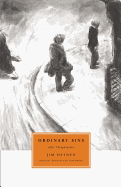
| Publisher: | Milkweed Editions | |
| Genre: | Fiction, Short Stories (single author), Literary | |
| ISBN: | 9781571310903 | |
| Pub Date: | November 2014 | |
| Price: | $20 |
| Starred | Fiction |
by Jim Heynen
The Greek philosopher Theophrastus, a student of Plato and Aristotle, wrote influential texts on science, ethics and human nature. His book Characters--a compilation of 30 "moral types" outlined through short literary descriptions--is the inspiration for Jim Heynen's story collection Ordinary Sins.
In more than 40 character snapshots supplemented with illustrations by Michigan artist Tom Pohrt, Heynen describes a man who talks nonstop to his bees, a girl who sprouts cherries from her ears, a well-spoken man who refuses to let people see him eat and someone who is such a good eulogist that strangers ask him to speak at funerals. The result is an archive of quotidian quirks--delightfully surreal in some cases, perfectly mundane in others.
At times, Ordinary Sins is reminiscent of certain Beatles' songs, such as "Eleanor Rigby" or "Mean Mr. Mustard," which illustrate characters both cartoonish and familiar. They contain a sort of winking, sidelong humor, as though the reader and narrator are enjoying an odd moment together.
There is even a profile of a critic ("The Book Reviewer") who finally writes her own book (a "strange and quirky collection of short prose pieces") and imagines what other reviewers will say. Though she hopes they label it "flash fiction," she thinks, "If anyone labeled them 'snippets' or 'vignettes' she would throw an epic tantrum."
In the book's introduction, Heynen discloses that several of the characters are thinly veiled self-portraits, adding, "You are welcome to find Waldo, if you can." --Annie Atherton

| Publisher: | Overlook Press | |
| Genre: | General, Fiction, Romance, Contemporary Women | |
| ISBN: | 9781468309270 | |
| Pub Date: | November 2014 | |
| Price: | $26.95 |
| Fiction |
by Farran Smith Nehme
Though Missing Reels is set in 1980s Manhattan and is focused on silent film, this debut novel from classic-film blogger Farran Smith Nehme is artfully fresh and intriguing.
Ceinwen Reilly, a small-town girl from the Midwest and newcomer to Avenue C, works with her two roommates at a vintage clothing store under a truly terrible boss. All three are obsessed with vintage fashion and classic movies, but none more than Ceinwen. When she discovers that an old film star lives in her building--the stunning and mysterious Miriam--Ceinwen makes it her mission to track down the movie in which her neighbor once starred. She enlists the help of Matthew, an aloof New York University math professor who has access to a variety of archives, in an attempt to unearth a number of film reels that likely don't even exist anymore. Though the odds are stacked against her, Ceinwen is determined not only to find and restore the missing reels but also to win Matthew's heart.
Ceinwen, a classic leading lady, relies on hard work, her passion for bygone cinema and a surprising amount of ingenuity to locate the film. While it's no surprise that Nehme nails the old Hollywood elements of the plot, the mood of this decade is also captured perfectly. References to shoulder pads as the height of style and descriptions of roast beef on rye as a standard lunch (few were vegan or gluten-free in this era) take readers 30 years back in time, with enthralling results. --Natalie Papailiou, author of blog MILF: Mother I'd Like to Friend
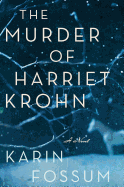
| Publisher: | Houghton Mifflin Harcourt | |
| Genre: | General, Fiction, Mystery & Detective, Literary | |
| ISBN: | 9780544273399 | |
| Pub Date: | November 2014 | |
| Price: | $24 |
| Mystery & Thriller |
by Karin Fossum
Karin Fossum's (Broken) seventh Inspector Sejer novel, newly translated into English, departs from the traditional whodunit model: The Murder of Harriet Krohn is narrated by Charlo Torp, the man who murdered Harriet. Charlo, a gambling addict desperate to pay his debts and reconnect with his estranged daughter, decides to rob an elderly woman. He uses a bouquet of flowers to entice Harriet to open her door and heads straight for her valuables. To his surprise, she fights back, and in the ensuing struggle Charlo beats her to death.
The next morning Inspector Sejer is called in, and his one clue is the elaborate bouquet, conspicuously out of place in Harriet's spartan home. Charlo, torn between agonizing guilt, fear of being caught and joy at reuniting with his daughter, offers only fleeting glimpses of Sejer. Though the novel is part of a well-established series, this change in perspective makes it an easy one for readers new to Sejer and his cases.
Charlo's rash, unplanned action makes the basis for a haunting story that will inspire readers to wonder what any of us could be capable of doing. Charlo's reminiscences--of his normal childhood, his early years as a father, the slow spiral of addiction and his final descent into murder--are a terrifyingly believable progression. In spite of the lack of a typical hunt for the killer, The Murder of Harriet Krohn provides an irresistible mystery: whether or not Charlo can learn to live with his actions. --Jessica Howard, blogger at Quirky Bookworm
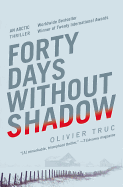
| Publisher: | Grand Central | |
| Genre: | Crime, Suspense, Fiction, Mystery & Detective, Thrillers, Literary, International Mystery & Crime | |
| ISBN: | 9781455547593 | |
| Pub Date: | November 2014 | |
| Price: | $16 |
| Mystery & Thriller |
by Olivier Truc
As a journalist, Olivier Truc has extensively reported on the Sami people, who inhabit the icy northern region of Norway, Sweden and Finland. Traditionally reindeer herders, the Sami have a distinctly separate culture from their Scandinavian neighbors. Truc's knowledge of the Sami and their history is clear in Forty Days Without Shadow, his fiction debut.
For centuries, Scandinavian pastors burned the drums of Sami shamans, trying to eradicate their "heathen" ways. There are only a few of these historic drums left in the world and they're all in the hands of museums or private collectors. A French collector returns his drum to the Sami people, but on the very first day that the sun reappears after its annual 40-day absence, the instrument is stolen before it's ever put on display. Klemet Nango, a Sami officer of the Reindeer Police (responsible for policing the herders), and his naïve young Norwegian partner, Nina Nansen, are assigned to the case.
This is the biggest case the two detectives have ever investigated, and their abilities are stretched to the limit. Just as they begin their search for the drum, a truculent herdsman is found dead with his ears cut off--it may be a related crime. Klemet and Nina have to manage Sami protesters outraged by the drum's theft, right-wing protesters upset with the Sami, belligerent reindeer herders and the sheer difficulty of conducting an investigation in such a geographically remote area.
Truc's novel tells the story of a beleaguered culture and individuals who are determinedly clinging to a way of life that seems at odds with modern society. --Jessica Howard, blogger at Quirky Bookworm
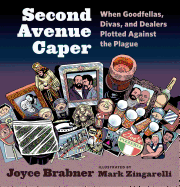
| Publisher: | Hill & Wang | |
| Genre: | Biography & Autobiography, Comics & Graphic Novels, Nonfiction, Social Activists | |
| ISBN: | 9780809035533 | |
| Pub Date: | November 2014 | |
| Price: | $22 |
| Starred | Graphic Books |
by Joyce Brabner, illust. by Mark Zingarelli
Activist and comics writer Joyce Brabner (Our Cancer Year) delves into the 1980s and the terrifying early days of AIDS in Second Avenue Caper, a graphic memoir illustrated by her friend and frequent collaborator Mark Zingarelli. Framed as a recent interview between Brabner and her old friend Ray Dobbins, a gay New Yorker who worked in those days as a nurse, it details how, in the midst of a puzzling storm of patients and a dirge of lovers and friends dying, Dobbins rallied his community of writers, musicians, actors, drag queens, artists and pot dealers to pull off a heist they hoped would save lives.
Second Avenue Caper is as much a biography as it is journalistic portrait of the times. That Dobbins's crew even had to smuggle drugs from Mexico to treat a public health concern is placed squarely into its political and social context. Like Howard Cruse's Stuck Rubber Baby, this book bears the gravitas of a troubling moment in history, drawing compelling lines toward its present and future ramifications. It both burns with righteous anger and tenderly embraces the many whose lives have been touched by the AIDS plague. --Dave Wheeler, publishing assistant, Shelf Awareness
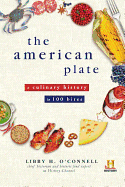
| Publisher: | Sourcebooks | |
| Genre: | United States, Regional & Ethnic, American - General, General, History, Cooking | |
| ISBN: | 9781492603023 | |
| Pub Date: | November 2014 | |
| Price: | $26.99 |
| Food & Wine |
by Libby H. O'Connell
The American Plate: A Culinary History in 100 Bites is a smorgasbord of "bites" of American history from the pre-Columbus era ("Maize") to the debate over GMOs, collected by Libby H. O'Connell, a History Channel filmmaker and connoisseur of American cuisine.
Readers can approach this survey formally--proceeding chronologically through the bites (which are, themselves, grouped into chapters) and thus through the centuries and their representative dishes--or sample sections at random. Are you a Civil War buff? Start with chapter five, "Hardtack and Chop Suey," to learn the differences between Union and Rebel rations, the recipe for Mary Todd Lincoln's white almond cake and why Asian workers were cheaper to hire for the construction of the transcontinental railroad. (They cooked their own food; white workers demanded board.)
Graphically irresistible and eminently digestible, O'Connell's book includes quick, meaty reads and vintage photos, advertisements and newspaper clips. Skim the pages and you'll take a visual trip through the past: "Pie" has an accompanying painting of a colonial housewife rolling a crust, "Beer and Pretzels" bears a photo of hardy German-Americans raising their mugs and a photo in "Iceberg Lettuce" depicts migrant farm workers.
Have you ever wondered how lunch pails came to be? (Hint: miners.) What counts as a cocktail? (The term was popularized in the early 1800s to describe syllabubs, toddies and punches.) How old is Jell-O? (Often identified with the '50s and '60s, it actually shimmied onto menus around 1900.) As addictive as potato chips, The American Plate whets the palate for history, even if American bison and roast beavertail aren't your cup of tea. --Cheryl Krocker McKeon, manager, Book Passage, San Francisco

| Publisher: | Holt | |
| Genre: | Great Britain - General, Biography & Autobiography, History, Europe, Royalty | |
| ISBN: | 9780805096569 | |
| Pub Date: | November 2014 | |
| Price: | $40 |
| Biography & Memoir |
by Janice Hadlow
Most Americans know two things about King George III of England: he held the throne during the American Revolution and he slipped into madness (a condition exemplified by his addressing Parliament as "my lords and peacocks"). In her first book, A Royal Experiment: The Private Life of King George III, Janice Hadlow presents a richer portrait of the regent, showing him as son, husband and father as well as ruler.
The Hanoverian kings of England were notorious for hating their heirs. They displayed that hatred in a public and often vicious fashion, and their heirs retaliated with equally public acts of political defiance. When 22-year-old George III inherited the throne from his grandfather, he was determined to build a family life different from the one he experienced as a child.
Hadlow begins with the three generations of Hanoverian royalty who preceded George III, describing dysfunctional family relationships that make soap-opera plots look tame by comparison: loveless marriages, parents separated from their children against their will, a wife imprisoned for adultery (or at least considering adultery), a mother who refused to see her son on her deathbed. The heart of the book explores King George's efforts to be the moral compass of his nation and to reconcile the values of domesticity with the demands of kingship--a noble experiment with mixed results and long-term consequences for the modern idea of monarchy.
A Royal Experiment will appeal to lovers of biography, Georgian England or royal scandal. --Pamela Toler, blogging at History in the Margins
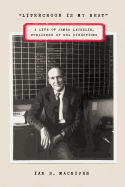
| Publisher: | Farrar, Straus & Giroux | |
| Genre: | Biography & Autobiography, Editors, Journalists, Publishers | |
| ISBN: | 9780374299392 | |
| Pub Date: | November 2014 | |
| Price: | $37.50 |
| Biography & Memoir |
by Ian S. MacNiven
"You're never gonna be any good as a poet.... You'd better become a publisher," Ezra Pound told a young Jim Laughlin. Laughlin hoped to become a poet--and he did turn out to be a pretty good one--but Pound's words were prophetic. As Ian S. MacNiven (Lawrence Durrell) ably demonstrates in this impeccable biography, Laughlin was a born publisher whose work "shaped English-language modernist poetry." More than any other man in the 20th century, "he directed the course of American writing." He was more than just his career, though: Laughlin was a recluse, an excellent skier, an adventurer, an idealist, a lover, a fine poet--a man who lived passionately.
While at Harvard, he took a $10,000 family inheritance ($2 million in today's dollars) and used it to found a publishing house, New Directions. In a letter to his Aunt Leila, he wrote: "I have a new direction and an increased confidence." In 1936, he published his first book, an anthology he designed himself, under this imprint. He thought it his "exhibition gallery" for "untested writers." It included Pound, Henry Miller (who became a life-long friend), Elizabeth Bishop and William Carlos Williams. Next came Federico García Lorca, Henry Miller and Delmore Schwartz's translations of Arthur Rimbaud. Tennessee Williams followed, then Vladimir Nabokov.
MacNiven looks at Laughlin's low points, too, such as his failures as a husband and struggles through various financial crises. But it's hard to shift focus from the authors he championed. It's an amazing story, and MacNiven tells it brilliantly with depth, grace and acuity. --Tom Lavoie, former publisher

| Publisher: | Liveright | |
| Genre: | General, Death & Dying, History, Social Science, World | |
| ISBN: | 9780871404541 | |
| Pub Date: | November 2014 | |
| Price: | $27.95 |
| History |
by Frances Larson
In Severed, anthropologist Frances Larson (An Infinity of Things) examines a dark side of the human head--specifically, its separation from (and attempted reattachment to) the human body in myriad ways and with different purposes, intentions and results.
Detached heads have served as religious and secular relics; scientific or pseudo-scientific tools; artists' inspiration; soldiers' souvenirs; and objects of ritual and political symbolism. In fact, much of Larson's study considers the interplay between the head as part of an individual and head as object: it is necessary to objectify in order to decapitate or dissect. An overarching concern is whether the head alone holds the essence of each of us. The question remains unanswered, even as Larson investigates cryonic suspension of severed heads and head transplants (or as their practitioners prefer, "body transplants") in one of her most intriguing and memorable chapters.
Larson's examinations of the head's place throughout history and the present are endlessly fascinating. Her writing is never gratuitously gruesome, but necessarily deals in grisly detail. Severed explores the head in idiom, in its "linguistic ubiquity," and as a tool for justifying racism: one major collector of skulls and related data rounded average skull size up for Germans and Anglo-Saxons, but down for "Negroid" Egyptians.
In this thoughtful survey of decapitated heads and their implications in history and across cultures, Larson is sensitive and thorough, allowing occasional humor while giving her subject the respect it deserves, offering entertainment alongside a truly engrossing educational experience. For readers of science, history, culture, anthropology and generally quirky nonfiction, Severed will be thought-provoking and unforgettable. --Julia Jenkins, librarian and blogger at pagesofjulia
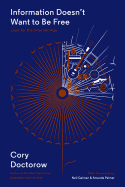
| Publisher: | McSweeney's | |
| Genre: | Anthropology, History, Technology & Engineering, Social Science, Cultural | |
| ISBN: | 9781940450285 | |
| Pub Date: | November 2014 | |
| Price: | $22 |
| Current Events & Issues |
by Cory Doctorow
At first glance, it may be tempting to dismiss Information Doesn't Want to Be Free: Laws for the Internet Age as a dry, dull account of copyright law as it relates to the Internet. But Cory Doctorow (Little Brother; Makers), coeditor of Boing Boing, is anything but boring, and this is a McSweeney's publication. Doctorow's short little book presents a fascinating and thought-provoking account of the laws, the Web and how the two struggle to coexist.
Doctorow structures his argument around three basic rules for understanding--and engaging with--copyright law online. The first rule addresses digital locks, including digital rights management (DRM), while the second moves on to the importance of distribution for achieving fame, and vice versa. The third, which gives the book its title, explores regulations, human rights and censorship. Taken together, Doctorow's rules present a multifaceted approach to understanding these potentially confusing laws, from what motivated governments to pass some of the first copyright regulations to more recent U.S. legislation, such as SOPA, PIPA and net neutrality.
Lest the theory behind these laws become too esoteric, Doctorow peppers his work with real-life examples of regulations in action online; lest it become too detailed to be easily understood, he offers analogies that bring the legalese back down to earth. Introductions from Neil Gaiman and Amanda Palmer make an incredible work even more impressive. Information Doesn't Want to Be Free is the most entertaining and informational book on copyright law you'll ever read. --Kerry McHugh, blogger at Entomology of a Bookworm
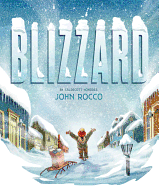
| Publisher: | Disney/Hyperion | |
| Genre: | Values, Boys & Men, General, Sports & Recreation, Self-Esteem & Self-Reliance, Social Issues, Winter Sports, Juvenile Fiction, Nature & the Natural World | |
| ISBN: | 9781423178651 | |
| Pub Date: | October 2014 | |
| Price: | $17.99 |
| Starred | Children's & Young Adult |
by John Rocco
John Rocco (Blackout) captures all the excitement and adventure that a blizzard brings, here drawing from his experience as a boy during the blizzard of 1978.
He pulls in readers even before the title page, as a series of pictures features a wool-hatted boy next to a ruler, becoming ever more buried in snow. Words and pictures work in tandem as the boy looks out of his classroom window ("The first flake fell right before recess," a dotted line traces the snowflake's path), then snow nearly obscures the word "Monday" on the blackboard as the children watch in wonder at the window ("It was followed by many, many more"). The snow is "already over our boots" by the time the narrator and his sister get home after an early school closing. Rocco throws in the occasional pun: "I thought it would never stop" accompanies a nearly buried Stop sign. The siblings crawl out the window to enjoy the snow day, "but walking was hard--it was like trying to move through white quicksand." Their English sheepdog's nose is hardly visible above the snowfall ("we need sled dogs," he says). While Dad shovels, the siblings dig out a snow fort. However, inside the house, "things got tense as our food started to run out."
The narrator comes up with a plan to get supplies for not only his family but the whole neighborhood. With plenty to discover upon rereadings and a hero to root for, this glistening picture book makes the perfect winter companion. --Jennifer M. Brown, children's editor, Shelf Awareness
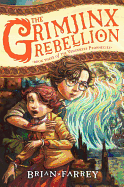
| Publisher: | HarperCollins | |
| Genre: | Fantasy & Magic, Action & Adventure, Juvenile Fiction | |
| ISBN: | 9780062049346 | |
| Pub Date: | October 2014 | |
| Price: | $16.99 |
| Children's & Young Adult |
by Brian Farrey
Brian Farrey brings the Vengekeep Prophecies trilogy to a close with the kind of humor, suspense and heart that has characterized the series from the start.
Those just meeting the Grimjinx family in this book may be a little lost, trying to figure out why the Dowager Annestra Sorenna would be consorting with a family of thieves. But fans will lap up this breakneck conclusion. The Dowager and Jaxter have returned to Vengekeep (from Redvalor Castle, where Jaxter's been studying with the Dowager) to announce that the High Laird will hold his Jubilee there next month. But the citizens are less than jubilant. And the next day, on Jaxter's 13th birthday, what should have been a celebration turns into tragedy: two Palatinate Sentinels (elite mages) whisk away his 11-year-old sister, Aubrin (aka Jinxface), convinced that she is a powerful seer, and Jaxter's best friend Cassie Strom seems to have at least partly caused Aubrin's kidnapping. Worse still, Aubrin leaves behind a cryptic message for Jaxter suggesting that his life is in danger. Jaxter, Cassie and their enemy-turned-friend Maloch set out to rescue Aubrin, but Aubrin worries that his attempt will fulfill the prophecy of his death. Meanwhile, there's trouble in the ranks, amongst the High Laird, his Dowager sister and those who supposedly serve him. Is there a bigger destiny ahead for Jaxter?
Farrey creates clearly delineated characters with complexity and compassion. These are thieves with the heart of Robin Hood. Their intelligence, resourcefulness and loyalty never falter. --Jennifer M. Brown, children's editor, Shelf Awareness